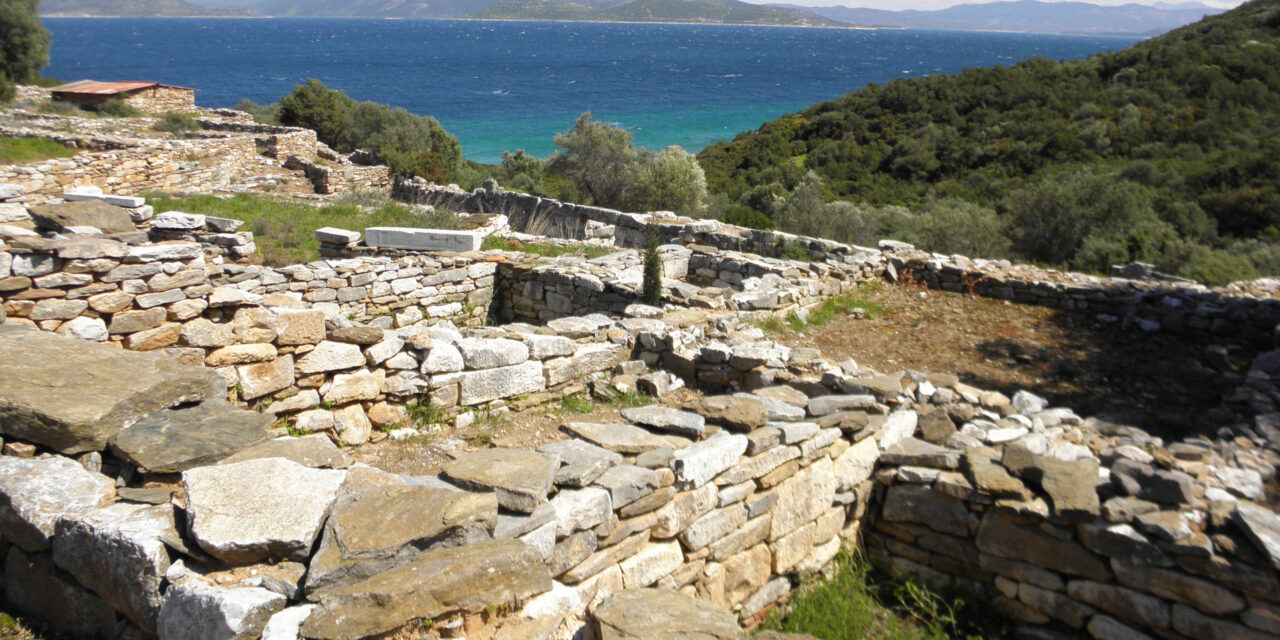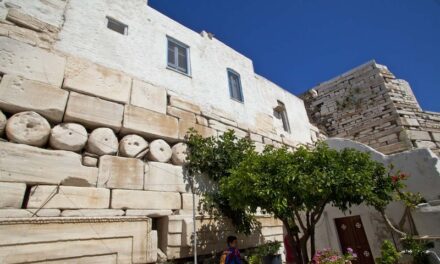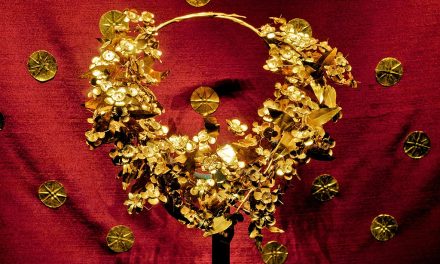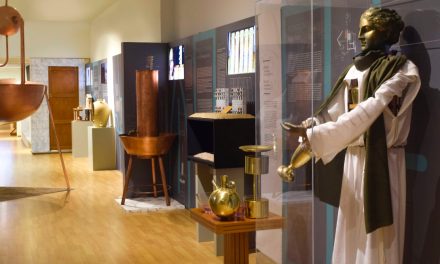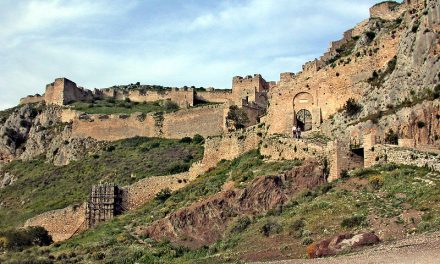Αt the northeastern edge of Attica, about 60km from Athens, next to the Euboean Gulf, lie the ruins of the ancient deme of Ramnous (Ramnountas). Ramnous is the best-preserved ancient Attic deme site and belonged to the Aiandidae tribe (Demes were suburbs or subdivisions of the ancient city-state of Athens – after Cleisthenes’ reforms, Athens was divided into 139 demes). The name “Ramnous” derives from the local Mediterranean shrub ‘rhamnos’ (Rhamnus Alaternus). Within the walls, public buildings, sanctuaries, and homes were constructed. An Athenian garrison was permanently stationed at the town’s acropolis, overseeing the sea route between Attica and Euboea (Cover photo: Ephorate of Antiquities of Eastern Attica).
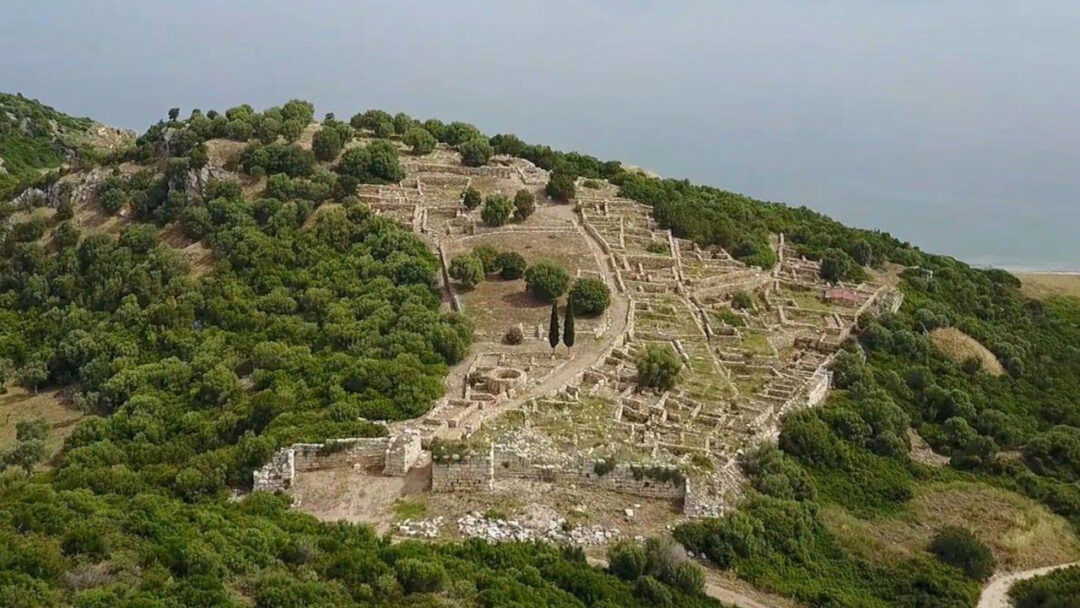
General view of Ramnous (Ephorate of Antiquities of Eastern Attica)
The famous Temple of Nemesis at Ramnous is the most important sanctuary of the deity in the Greek world. Nemesis was the goddess of indignation against, and retribution for, evil deeds and undeserved good fortune. She personified the resentment felt by people towards those who committed crimes with apparent impunity or enjoyed excessive good fortune. According to the myth, to win her over, Zeus transformed himself into a swan while she took the form of a goose. After their union, Nemesis laid an egg, which was given to Leda. From this egg hatched the beautiful Helen (the central figure of the Trojan War) and the Dioscuri. The sanctuary honoring Nemesis is believed to have been founded in the early 6th century BCE, reaching its peak during the 4th and 5th centuries BCE.
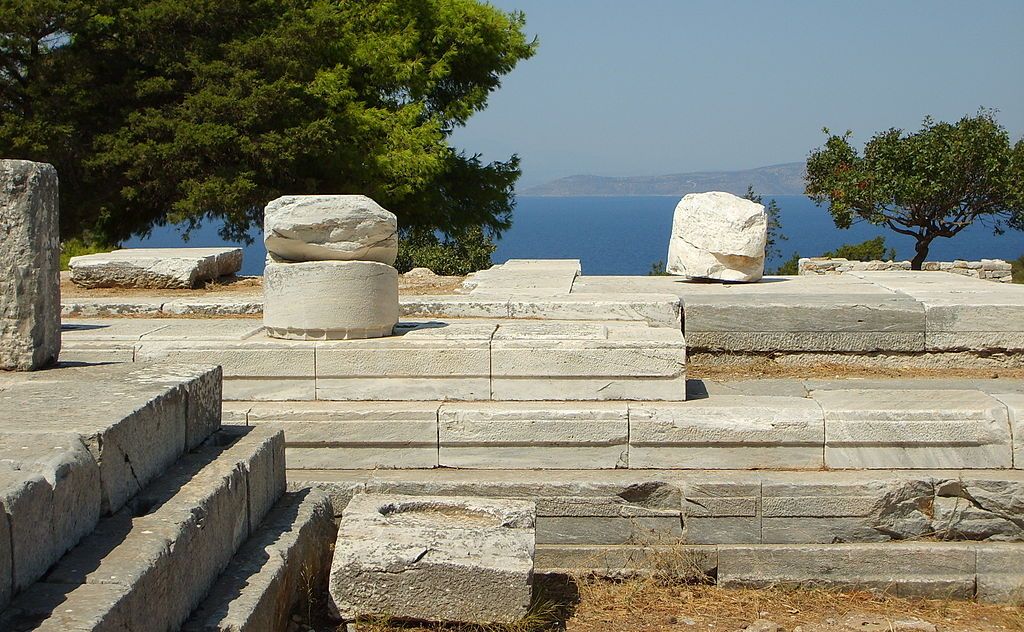
The Temple of Nemesis (Photo: wikipedia.org). The area was shaped by the construction of strong isodomic retaining walls on the north and east sides to support the soil. The first archaic limestone temple was destroyed by the Persians in 479-480 BCE, along with many other buildings in Attica. A new, larger temple was built after the mid-5th century BCE, north of and very close to the previous one. It is a Doric peripteral temple with 6 columns on the short sides and 12 columns on the long sides. The temple consists of a pronaos and an opisthodomos with two columns between pilasters and measures 21.40 by 10.05 meters. Today, only ruins of this temple remain (Source: searchculture.gr)
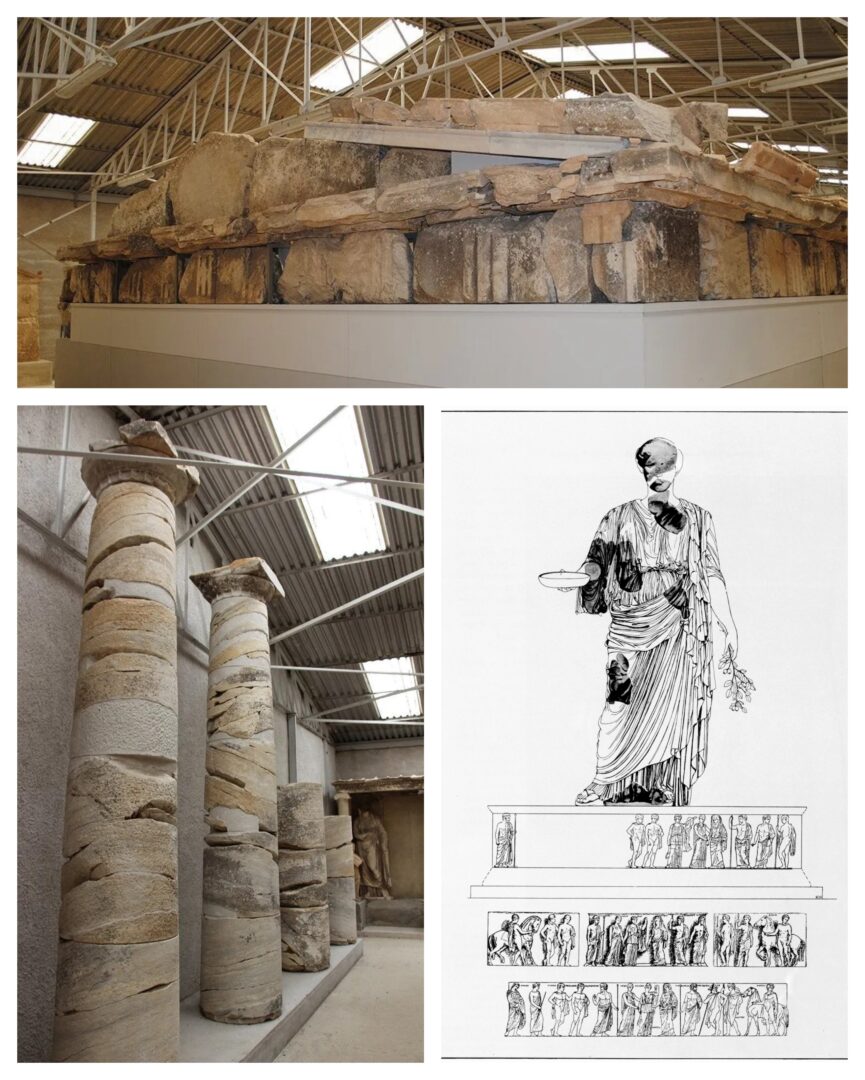
The restored entablature of the Temple of Nemesis (above) and restored columns of the Temple (lower left). Although the beginnings and ends of the characteristic flutings of the Doric order were properly carved, the work was never completed, leaving the large temple with the appearance of an unfinished project. Reconstruction of the statue of Nemesis at Ramnous (lower right). Inside the temple was kept the famous statue of the goddess Nemesis, a work by Agorakritos of Paros, a student of Phidias. The sculpture has survived only in a very fragmentary condition and is dated to the decade 430–420 BCE. The statue, standing 3.50–3.60m tall (4.40m including its base), was made of Parian marble and depicted the goddess standing, dressed in a chiton and himation, holding a phiale in her extended right hand and a branch in her left. The base of the statue was made of marble from Dionysus and has been restored from numerous fragments found scattered around. The relief decoration depicts the presentation of Helen to her mother Nemesis by Leda. The destruction of the statue of the goddess by Christians is dated to the late 4th century CE (Photos: huffingtonpost.gr/).
The area of Ramnous has been continuously inhabited since the Neolithic period. Ramnous is mentioned by the geographer Scylax as an important fortress. The sanctuary of Nemesis at Ramnous inspired the Athenian army to fight at nearby Marathon. The fortress of Ramnous, like that of Sounion on the southern coast of Attica, is believed to have been constructed during the Peloponnesian War to control the ships carrying grain to Athens. In 322 BCE, the admiral of the Macedonian army, Cleitus, landed troops at Ramnous but was expelled by Phocion, who captured the fortress. In 296 BCE, the fortress was taken by Demetrius the Besieger. The decline begins during the Hellenistic period. Pliny mentions visiting Ramnous in the mid-1st century CE. The temple of Ramnous also interested Herodes Atticus, who perhaps funded its repair. The area was gradually abandoned, but the temples of Nemesis continued to be maintained until the 4th century CE (Source: odysseus.culture.gr).
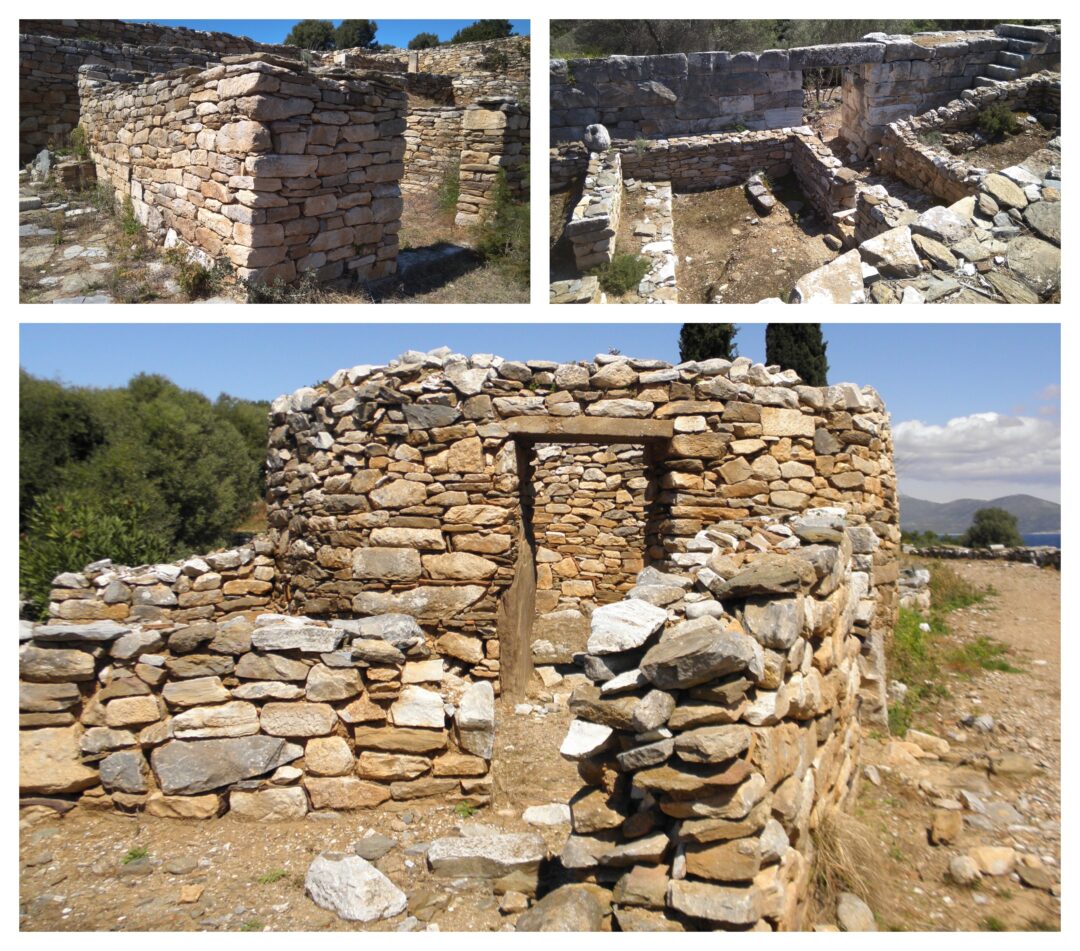
Ruins of houses with simple walls. The stronger wall was made of large, well-built stones (Ephorate of Antiquities of Eastern Attica)
The first excavations at Ramnous were carried out by the Dilettanti in 1813 and by Dimitrios Filios in 1880. Between 1890 and 1892, excavations conducted by V. Stais uncovered the sanctuary, the fortress, and many burial enclosures. From 1975 to the present, the archaeological site of Ramnous has been systematically excavated and studied, funded by the Archaeological Society and directed by the archaeologist, V. Petrakos.
The fortress, along with the wall surrounding the settlement, small sanctuaries, the theater, and the city’s gymnasium, have been preserved. Remarkable statues were found inside the early 6th century BCE small temple, which no longer survives today, but its existence was confirmed by preserved Laconian roof tiles. The small temple was rebuilt in the early 5th century BCE with polygonal masonry, and its ruins are visible today. (Source: odysseus.culture.gr).
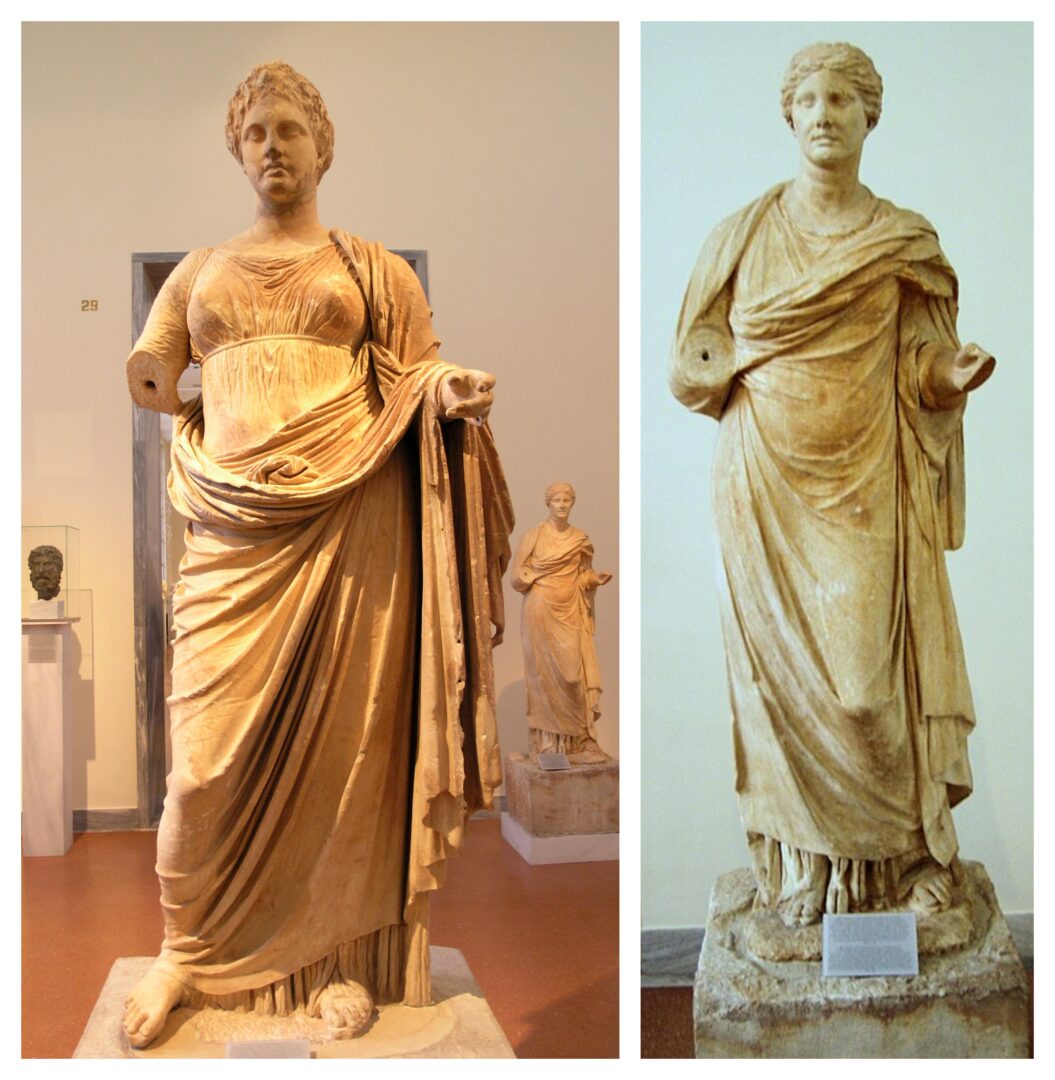
Statue of Themis (left). Sculpted by Chairestratos, made of Pentelic marble, height 2.22m, dated to around 300 BCE. Discovered in 1890 at the small temple of Nemesis and dedicated to Themis by Megacles, as inscribed on the base. Now housed in the National Archaeological Museum of Athens. Themis was the goddess of divine law and order. She was the first to instruct humankind in the primal laws of justice and morality, including the principles of piety, hospitality, good governance, proper conduct in assemblies, and devout offerings to the gods (Photo: el.wikipedia.org). Statue of Aristonoe, priestess of the goddess Nemesis (right). Pentelic marble,1.62m in height, dated to the 3rd c BCE. Discovered in 1890 at the small temple of Nemesis. According to the inscription on the base, the statue was commissioned by Hierocles. Aristonoe was the daughter of Nicocrates from Ramnous. During the excavation, a tomb was found on the temple floor in front of the pedestal. This tomb may have belonged to Aristonoe herself, who, due to her status as a priestess, was likely buried within the temple and honored with a statue. (Photo: el.wikipedia.org)
Inside the fortified enclosure, both private and public buildings have been uncovered. Notably, the theater and the gymnasium stand out, while the agora of the deme was also located this area. At the top of the hill—within the inner fortified zone—stood the military installations, including the fortress. Below the fortress, on the coastline, two small harbors—the eastern and the western—served ships tasked with controlling passage through the Euboean Gulf.
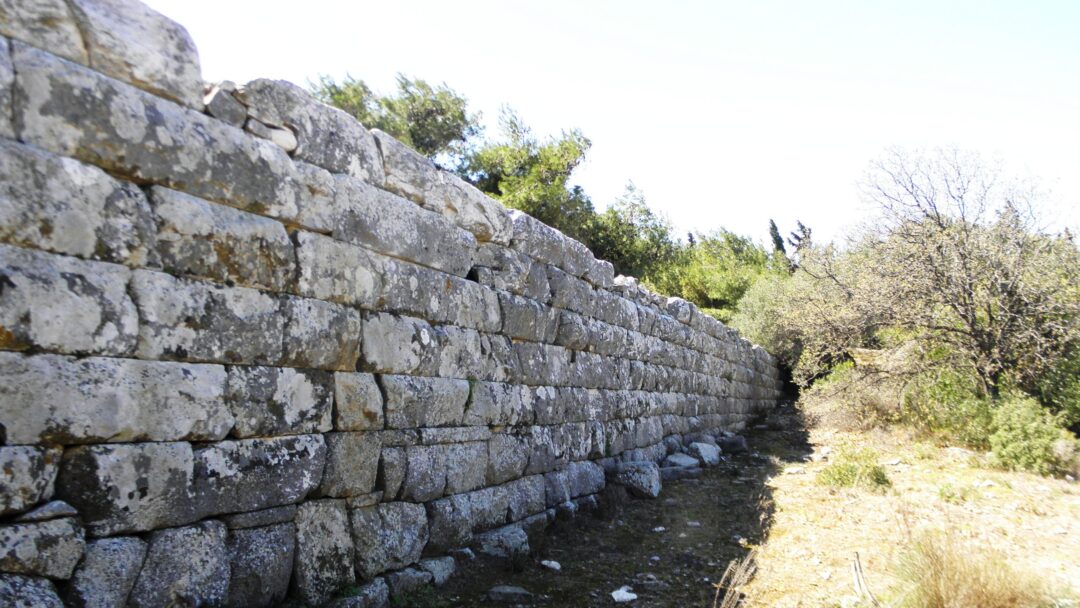
The fortress surrounding the settlement of Ramnous consists of an outer enclosure wall, approximately 800m in length, and a smaller inner enclosure that surrounds the hilltop. The main entrance of the outer enclosure is on the southern side and is flanked by rectangular towers for protection. Similar rectangular towers were also built at various other points along the wall to reinforce the fortifications (Ephorate of Antiquities of Eastern Attica)
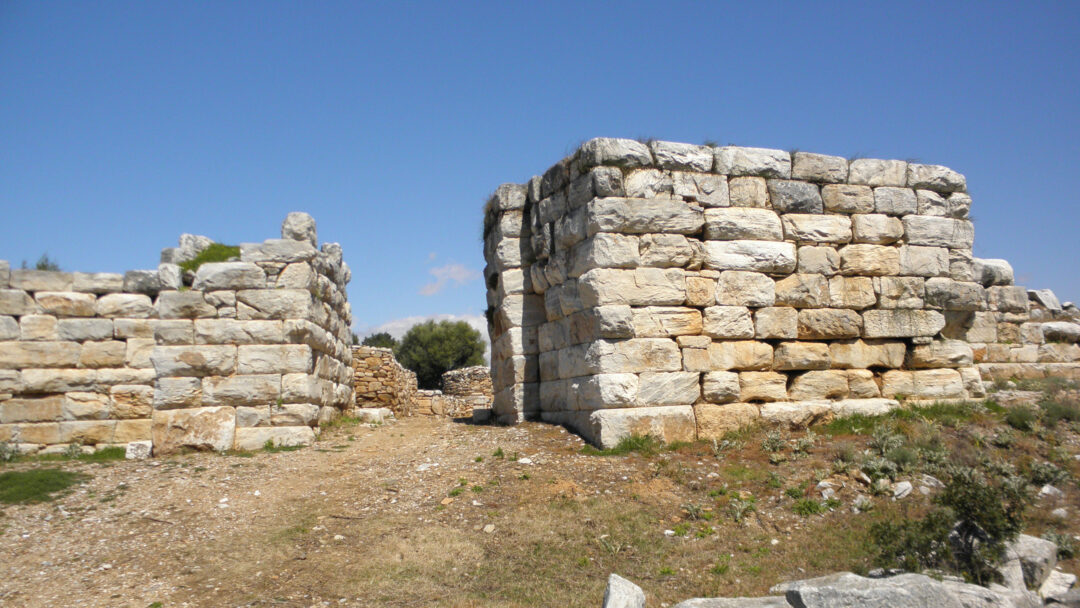
The Southern Gate (Ephorate of Antiquities of Eastern Attica)
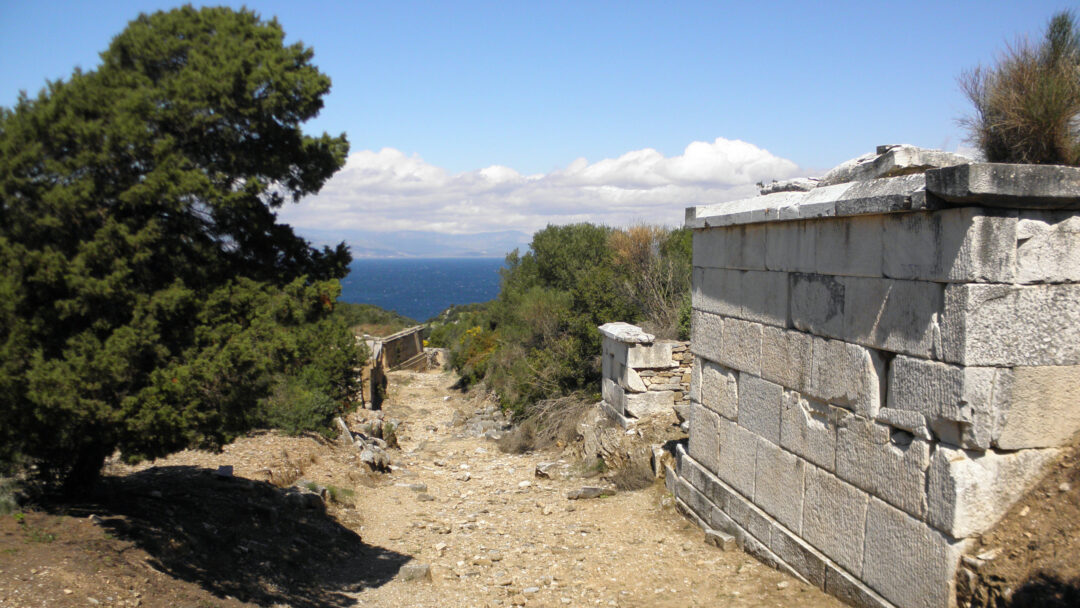
Excavations also uncovered a section of the ancient road that once led to the deme of Ramnous. This road passed in front of the Sanctuary of Nemesis and continued up the fortress. Along this route, archaeologists discovered numerous luxurious burial enclosures dating from the Classical period, featuring remarkable funerary reliefs, small shrines, and columns. Several of these enclosures have been carefully restored (Ephorate of Antiquities of Eastern Attica)
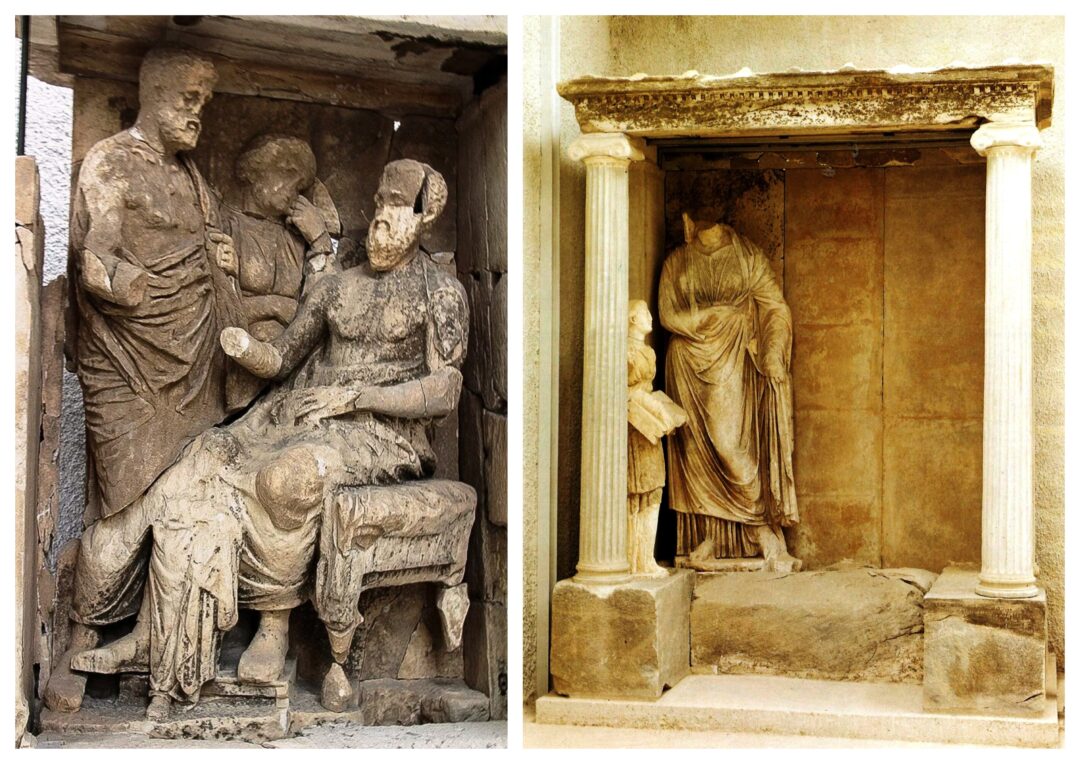
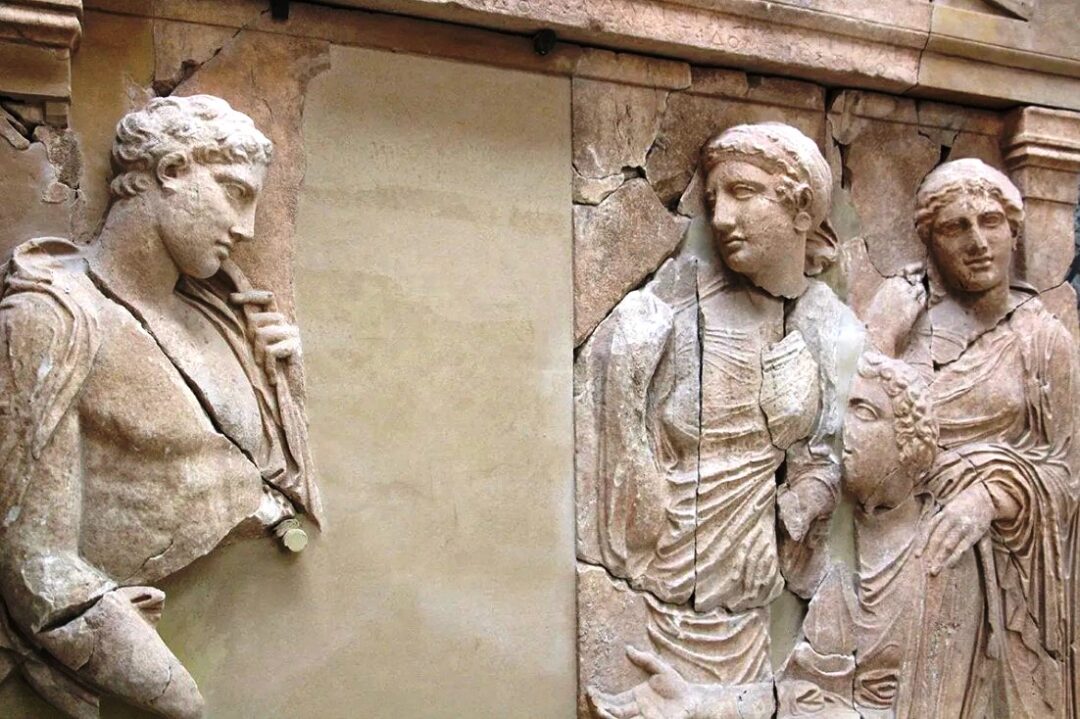
Funerary Monuments from Ramnous. A funerary small temple (naiskos) belonging to the Pytharchos family features a typical depiction of a farewell “reception” between father and son, with the young grandson resting on his grandfather’s knees. Behind them stands, likely, his wife, Pythocriti (upper left). The large funerary naiskos of the Diogeiton family, in the Ionic order, restored and preserved, was part of the family’s burial enclosure (upper right). The funerary stele of the Menestides family portrays a touching family grouping (lower). A missing fragment, lost due to looting in 1879, is now housed in the National Archaeological Museum. The scene depicts two men on the left — Menestheus and Menesthenes, sons of Menestides — and three women on the right: their two sisters standing, and their mother, Nausiptolema, seated. (Photos: huffingtonpost.gr/).
(Source: welovemarathon.gr)
A visit to Ramnous today can be ideally combined with a nature hike or a refreshing swim at the nearby beaches (visitgreece.gr). Access to the beach is a bit challenging due to the dirt road leading to it, but the final destination is well worth the effort. The beach lies directly below the Sanctuary of Nemesis, tucked away in a secluded and scenic cove. Its exotic beauty and the natural surroundings, including a pebbled shoreline and peaceful atmosphere, make it an ideal spot for those seeking a close connection with nature. Since the beach is not organized, visitors are advised to bring all necessary supplies for their stay. Due to its isolation and crystal-clear waters, the beach has also become a popular choice for naturists.

Ramnous beach (Photo: tripadvisor.com.gr)
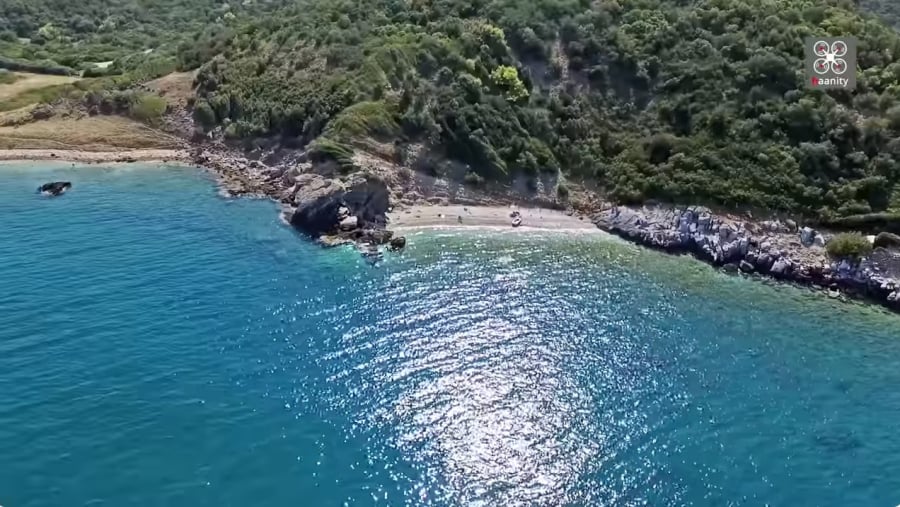
Ramnous beach (Photo: athensvoice.gr)
(Source: athensvoice.gr)
I.A.
TAGS: ANCIENT GREECE | ARCHAEOLOGY | ATTICA | TOURISM

